
A Sense of Doubt blog post #1779 - Best Comics of the Decade
I am sharing a bunch of end of decade posts of ranked lists about comic books. I will share a partial set of the rankings from the DEN OF GEEK site followed by sharing DOOM ROCKET's list in its entirety. I will share some links from other sites with end of decade retrospectives and vet a few of the choices.
Wow, I finished this post at precisely 10:10 a.m. the time I always post as it's the time of my mother's death in 2015. I managed to review a lot more lists than I thought I would. I worked on this post for much of NYE while watching movies and drinking white wine.
I feel that the comics I noted in the various lists managed to get most of my favorite comics named. I have some issues with the content I provided, but as I wrote, there's many comics here that I have not read, which is surprising as I read A LOT of comics.
Dig into this content with me to launch the new year.
But first, an honorable mention from DOOM ROCKET's end of year (2019) list.
THESE SAVAGE SHORES
 Interior page from ‘These Savage Shores’ #5. Art: Sumit Kumar, Vittorio Astone, Aditya Bidikar/Vault Comics
Interior page from ‘These Savage Shores’ #5. Art: Sumit Kumar, Vittorio Astone, Aditya Bidikar/Vault ComicsOTHER LISTS:
EW's Top 15 Comics of the Decade
Monstress and Ms. Marvel both rank higher on EW's list than any others. Saga, My Favorite Thing is Monsters, and Hawkeye also appear on this list. But I am very thrilled to see Young Avengers, Batman, and the newly rebooted X-Men series at Marvel do belong on this list, though I might have ranked Hickman's Avengers or even the Fantastic Four over the new X books not even a year old.
Polygon's top twenty list of comics for the decade
Many of the same comics rank here like Saga, Afterlife With Archie, and Mister Miracle, which are on man lists. The comic I share below from Comic Beat is on this list as are Ms. Marvel, Bitch Planet, The Wicked + The Divine, Thor, and Batman (Snyder/Capullo), which are all on my list. But one comic that I had not seen on an list that along with Monstress was one of my favorite comics from its debut in 2017 as I shared here:
Hey, Mom! Talking to My Mother #961 - Best Comics of 2017 via EW - Black Panther - pt.1.
:no_upscale()/cdn.vox-cdn.com/uploads/chorus_asset/file/19347500/IMG_E6CC14F1836C_1.jpeg)
Many of the comics in Comic Beat's list were in the other lists. One that I had not seen in all the lists that should be in all lists is The Immortal Hulk, which is currently the best Marvel comic and arguably that best at either of the big two companies. Though I must note that Polygon listed it.

The Immortal Hulk
WHAT CULTURE has that annoying interface forcing the user to page through multiple pages in order to expose the reader to more advertisements. So annoying. But they did make a video.
It's great to see Batwoman listed and an honorable mention to DC's Doomsday Clock. I am surprised to see Hawkeye take number one. It's a very good book, but there are many that deserve to be ranked more highly, such as both Black Panther and The Immortal Hulk
AV CLUB'S TOP 25 BEST COMICS OF THE DECADE
Man comics appear in this list that I have not read but will now, such as Daytripper, Giant Days, Here, and March. Also, Prince of Cats appears, which is a book I did not know about, but one I have seen in almost every list. However, there are many omissions. The list seems heavily swayed toward comics outside the big companies, which is actually a very cool thing.
It also chooses from web comics, which is also wonderful.
HOLLYWOOD REPORTER'S TOP TEN BEST OF DECADE LIST
SYFY DECADE IN REVIEW - INDIE COMICS
Clearly, SYFY means by "indie" all comics not produced by the big two -- Marvel and DC. Many of the usual suspects appear here, such as The Wicked + the Divine, Saga, Bitch Planet, and Sex Criminals. This Prince of Cats that I did not know appears again. I am also pleased to see Deadly Class and of course Monstress.
BEST COMICS OF THE 2010s ACCORDING TO COMIC HERALD
70-61
I am shocked that this book is not ranked in more lists and yet I have only seen it here.
61) Lazarus by Greg Rucka and Michael Lark
60-51
This book is top 25 for me, and I would rank it over The Fade Out, which DOOMROCKET ranked in its top ten.
58) Fatale by Ed Brubaker and Sean Phillips
by Ed Brubaker and Sean Phillips
56) Grayson (The New 52) by Tom King, Tim Seely, and Mikel Janin
by Tom King, Tim Seely, and Mikel Janin
40-31
30-21 - I have seen Remender and Opena's X-Force on a few of the lists. It's a very underrated book.
21) Uncanny X-Force by Rick Remender, Jerome Opena, Dean White
by Rick Remender, Jerome Opena, Dean White
John Galati: I don’t know how he does it, but Rick Remender surprises me every time. And this is especially true with Uncanny X-Force.
20-11
For me, this is probably a top ten book.
12) East of West by Jonathan Hickman and Nick Dragotta
by Jonathan Hickman and Nick Dragotta
10-01
Comic Herald lumps the entire Hickman Marvel universe -- Fantastic Four, Avengers, and X-Men -- into one category as the greatest creation of the decade. It's great to see Mind MGMT at third, which is a book I loved though I would not have put it in a top ten.
The Comic Book Herald's top 500 comic books of all time

IGN'S BEST COMICS OF THE DECADE
Looks like this list may consist of close to 100 books. Many of the usual culprits but several books
I am happy to see some books on this list that did not appear on others, such as Die by Kieron Gillen and Stephanie Hans, one of my most recent favorite books; Gideon Falls by Jeff Lemire and Andrea Sorrentino; also a new favorite that I picked up in trade format because Image lures readers with a low cost ($9.99) first volume and then jacks up the price on the subsequent volumes; Green Arrow by Jeff Lemire and Andrea Sorrentino, because one can never have enough of this team; Rachel Rising by Terry Moore; Moonknight by Warren Ellis, Declan Shavley, and Jordie Bellaire, though, for this team, I would have picked Injection instead; Secret Wars by Hickman and Esad Ribic; Seven to Eternity by Rick Remender and Jeremy Opena; and The Old Guard by Rucka and Leandro Fernandez.
written by Jeff Lemire, art by Andrea Sorrentino (Image Comics)
Madness and mystery clash in this horror comic set in a small rural town. Urban legend tells of The Black Barn, a harbinger in the shape of a building that appears just before tragedy strikes. The fates of two men are intertwined with this ill omen in this dark, suspenseful tale.
Here's one last book that should be on a list and I did not see it on ANY LISTS:

https://imagecomics.com/comics/releases/velvet-1

https://www.denofgeek.com/us/books/285089/the-best-comics-of-the-decade
The Best Comics of the Decade
We've read a TON of great comics in the
last 10 years, and we picked out the
100 best for you to passionately disagree with.
FEATURE Jim Dandy Dec 30, 2019
I am not copying this site entire top 100 instead I am grabbing a few key choices in the 100-11 range and then sharing the top ten.
100. Batman & Robin
99. Black Science
Rick Remender, Matteo Scalera, Moreno Dionisio (Image Comics)
Black Science is a comic full of Rick Remender’s fears and worries. Scalera and Dionisio turn them into bright, colorful, wildly creative visuals as Grant McKay bounced around the Eververse trying to find a way at first to express his anarcho-scientistism, and then to save his family. It wrapped up earlier this year, and Remender and the team did an elegant job landing the plane on one of the best books from a wave of big name creator owned books that launched back in 2014.
98. Black
Kwanza Osajyefo, Tim Smith 3, Jamal Igle, Khary Randolph (Black Mask Studios)
Osajyefo, Smith, Igle and cover artist Khary Randolph’s comic about what would happen in a world where only black people got superpowers stripped the “mutant” part from “the mutant metaphor” and also the “metaphor” part, and gave us a story about black people being treated like exploitable resources by the US government. Igle’s black and white art was terrific, and the story is rough when you explain the plot, but rougher when it plays out on the page in front of you.
97. Assassin Nation
Kyle Starks, Erica Henderson (Image Comics)
Starks and Henderson are both gifted comics creators on their own. Pairing them together gave us something beautiful – a book that’s about the world’s greatest assassins banding together to fight for their lives. It’s got unique characters with distinct voices and ridiculous, over the top action.
96. Boundless
Jillian Tamaki (Drawn & Quarterly)
Time has sped up immensely in the last three years. Things that feel momentus happen and are forgotten four hours later. Trends are microtrends, fads are localized without geography, and entire 24-hour news cycles are compressed to the space between weathers on the 1s. So it’s really weird how a collection of in-the-moment short comics drawn (presumably) in 2016 feels extremely relevant and timely now. Tamaki takes a bunch of quick stories – about a mirror Facebook that shows you what might be in a parallel world; a Twilight Zone-esque cultural phenomenon mp3; a porn sitcom from the ‘90s gaining more than a cult following 25 years later – and uses the characters to say something interesting about them or us or our world. It’s a great book.
95. Imperium
Joshua Dysart, Doug Brathwaite, Scot Eaton, Cafu, Khari Evans, Ulisses Ariola (Valiant Entertainment)
Toyo Harada is a underratedly great villain, and Imperium is the story of him trying to impose his will on the world. Valiant books have, since their return early this decade, been pretty tightly intertwined, but most of their central narrative has revolved around Harada. He’s a great choice for that. He’s as big an egomaniac as Lex Luthor or Dr. Doom, but he’s got the benefit of operating in a world where the political rules are more like those of ours, which enhances everything good and bad about his character. Dysart and the art team give us an outstanding story about megalomania here.
94. X-Men: Second Coming
Matt Fraction, Zeb Wells, Mike Carey, Craig Kyle, Christopher Yost, David Finch, Terry Dodson, Greg Land, Mike Choi, Ibraim Roberson, Rachel Dodson, Sonia Oback (Marvel Comics)
Second Coming is the payoff to my favorite era of X-Men books so far, the Messiah Era. It starts out blazingly fast, and then plays out over the course of 14 issues and somehow speeds up as it goes along. It’s a straight up summer blockbuster action movie in comic form that does an excellent job blending voices, art styles and ongoing plots with the overall narrative of the crossover without losing any momentum.
93. Ultimates 2
Al Ewing, Travel Foreman, Christian Ward, Dan Brown (Marvel Comics)
Al Ewing is well on his way to stardom because of how good The Immortal Hulk is, but the cool kids all knew where he was going after he teamed up with Foreman and Ward to tell a story about the self-aware multiverse and cosmic entities of the Marvel universe in The Ultimates/Ultimates 2. This book is weird and gorgeous, and even if it leaned towards implying some big changes for the greater Marvel cosmology without ever seeing those changes bear fruit, it was still a terrific story on its own right.
92. Adventure Time
Ryan North, Shelli Paroline, Braden Lamb (BOOM! Studios)
A licensed property like Adventure Time is tough to get right. The cartoon is so inventive that even if you match what shows up on the screen, it’s still just a pale shadow because the creativeness of the ideas is the point. So it was a huge surprise when the comic nailed it – it was every bit as wild as the show, only it also captured the voices of the characters perfectly and delighted in being a comic in a way that made it a celebration of the medium. This was the first time North managed to get rollover text into a printed comic, and it works, man.
91. The Divine
Boaz Lavie, Asaf Hanuka, Tomer Hanuka (First Second)
The Hanukas do two things really, really well in The Divine. They do great scale shifts. The camera zooms from pulling in really close on an eye about to bleed to pulling waaaay back to show giant beasts roving what looks like a fantasy countryside, and each decision about where to put the camera serves the story well. And the coloring adds to the surrealness of the story. It’s bright and full of greens and pinks almost to the point of being disorienting, which is I think the goal of that palette choice. The story is excellent too, about Burmese (or I guess Myanmarese now) child soldiers defending the land of their gods from resource extractors.
90. Ivar, Timewalker
Fred Van Lente, Clayton Henry, Brian Reber (Valiant Entertainment)
Ivar is surprisingly emotional and a ton of fun. Tonally, it’s one of the most distinct Valiant comics – it threads the needle of Quantum & Woody comedy, X-O Manowar high adventure and Eternal Warrior mythmaking. Van Lente takes pieces from all of those genres and knits them together with a ton of humor to make a super entertaining comic. What’s not to like about a book that starts with the main character throwing up his arms and shouting “LET’S KILL HITLER!”?
89. Virgil
Steve Orlando, JD Faith, Chris Beckett, Tom Mauer (Image Comics)
What I liked most about Virgil is how little it felt like Orlando and Faith were shading the story. It’s simultaneously about how reprehensible Jamaica is towards gay people; crooked cops; and a love story; and a revenge story, and no one aspect overrules the others. Virgil is a dirty cop in Jamaica and also a gay man who loses his love and goes on a rampage. Every part of the story is given equal attention, and the final result is really, really good comics.
88. Memetic
James Tynion IV, Eryk Donovan (BOOM! Studios)
It’s shocking how prescient Memetic feels. It’s genuinely creepy horror work from Tynion and Donovan, but it’s also about a meme and the homogenization of culture, and it landed like, 3 years before those ideas really penetrated the cultural zeitgeist. Donovan’s art manages the tricky feat of nailing the genuine horror of the situation, from the shock on the characters’ faces to the gross-out body horror later in the book, but it’s also genuinely funny at times. That damn sloth meme has been stuck in my head for five years.
87. The Manhattan Projects
Jonathan Hickman, Nick Pitarra, Jordie Bellaire (Image Comics)
Some books need long explanations to justify inclusion on a best books of the decade list. Some just need you to say “Richard Feynman and Albert Einstein gun down a space station full of FDRobots.” Guess which one Manhattan Projects is.
86. O.M.A.C.
85. All-New Wolverine
Tom Taylor, David Lopez, David Navarrot, Nathan Fairbairn (Marvel Comics)
One of the best X-Men comics from the last ten years is also one of the most unexpected: it’s a Marvel book that steals DC’s traditional schtick about how to be a great legacy hero. Laura Kinney takes over Logan’s mask after her clonefather dies, and decides to make it a more outwardly and publicly superheroic mantle. Spoilers: she’s GREAT at it. Taylor gives her real growth as a character, and uses the best new character of the last 10 years (Jonathan the Wolverine and also Scout nee Honey Badger) to great effect. I was stunned at how much I loved this comic.

84. Assassination Classroom
Yusei Matsui (Viz Media)
I’m not sure how I would briefly describe this book, and that’s part of why I love it. A monster destroys ¾ of the moon and says more is coming. But he gives mankind an out: Kill him inside of a year, and he’ll leave them alive. Then, and this is where it gets nuts, he takes over as homeroom teacher for a group of misfit teenagers and starts teaching them how to kill him. It’s basically Bad News Bears with a little more murder and some great manga art from Matsui.
read Assassination Classroom on Amazon
83. Chilling Adventures of Sabrina
Roberto Aguirre-Sacasa, Robert Hack (Archie Comics)
The best thing about Chilling Adventures of Sabrina isn’t that it spawned a great TV adaptation on Netflix. The best thing about it is how faithful to the comic the TV adaptation is. Part of Archie’s horror renaissance, Chilling Adventures of Sabrina is a genre anachronism that revels in its horror story trappings and delights in placing wholesome Archie characters in it. It’s drawn well and smart and a lot of fun from start to finish.

82. Uber
81. The Spire
Si Spurrier, Jeff Stokely, Andre May (BOOM! Studios)
Simon Spurrier does two things better than almost anyone in comics: he chooses incredible artists to work with, and he (and the artists) put together some stunning worlds for their characters to live in. The Spire is a murder mystery set in a fantasy city with a rigid class structure, and he and Stokely make a city that I felt immersed in immediately upon starting the book. One other thing Spurrier and crew do really well: wreck their main characters and break your heart, and The Spire is some of his best work.

80. Aliens: Dead Orbit
James Stokoe (Dark Horse Comics)
James Stokoe could have drawn 100 pages of character models and it would be on this list. He’s an incredible artist who draws incredibly detailed everything. Everything! Rubble. Ribcages. Control panels. Inner mandibles. Giving him an Aliens book is the no-brainer of no-brainers – this is what HR Geiger would have drawn if he was raised on anime.
read Aliens: Dead Orbit on Amazon

79. Shade the Changing Girl
Cecil Catellucci, Marley Zarcone, Kelly Fitzpatrick (DC Comics)
It takes a really gifted eye to see the absurdity in everyday life and expose that to your readers with only a modest tweak to reality. Zarcone and Castellucci use dropping Rac Shade’s madness vest and Loma the alien bird into the body of a comatose mean girl as their way to show just how silly teenage life can be, and it’s beautiful. Shade the Changing Girl and its follow up, Shade the Changing Woman, both do magnificent work of using insanity to take you through a rollercoaster of emotions.
read Shade the Changing Girl on Amazon

78. Wuvable Oaf
Ed Luce (Fantagraphics)
I think the best part about Wuvable Oaf, the indie book about black metal San Francisco bears is just how nice it is. It’s a really sweet, funny courtship story about an ex-underground wrestler starting a relationship with a small, blood-drenched metal singer. I find myself recommending this book to a surprising amount of people.

77. Upgrade Soul
Ezra Claytan Daniels (Lion Forge Comics)
Ezra Claytan Daniels went for messed up, twisty sci fi right out of the gate, and it was a home run. Upgrade Soul is an ugly body modification story about trying to prolong one’s life unnaturally, and what happens if that’s not all really well thought out beforehand. It’s drawn really well: even now, the scene with the gauze coming off layer by layer, the pacing of it and the skill of setting that sequence up, is amazing.
76. Strong Female Protagonist
Brennan Lee Mulligan, Molly Ostertag
“What if superheroes were real” is usually an exceptionally stupid premise for a comic, but there are plenty of ridiculous components to the superhero conceit that are worth examining. One of them is the value of superheroing – does flying around punching shit really actually fix anything? In Strong Female Protagonist, Alison Green asks that question, decides it doesn’t, and quits capes for college and activism in New York. This is a great story well told, but what I enjoy about it now is how New York it feels. It’s a really thoughtful take on superheroing, but it’s also a really good story that transports you to an age and a place.
read Strong Female Protagonist here
75. Journey Into Mystery
Kieron Gillen, Doug Brathwaite, Ulises Ariola & others (Marvel Comics)
Journey Into Mystery shouldn’t have been successful. Loki wasn’t quite at the height of his powers yet, and while he was getting there, even now he can’t really carry his own book. It was also a legacy numbered relaunch coming out of a big summer crossover event. And yet, Kieron managed to take new kid Loki and use him to tell a story about stories and fate and myth that stands up there with some of the greatest Asgard stories ever told. What he does with the trickster god is actually sad and moving (and also generally hilarious – he writes a really fun Loki). it It’s one of my favorite things he’s ever written.
read Journey Into Mystery on Amazon
74. Kinski
Gabriel Hardman (Monkeybrain Comics)
Sometimes, a comic is just plain good. Sometimes, a comic prominently features the GOODEST BOY on a cover. Sometimes, as is the case with Kinski, a comic does both. Hardman is a master of the form, and Kinski is one of his most underrated works. It’s the story of a guy bored with his life and trying to save a black lab puppy – not especially complicated or deep, but enough to hook me in, especially with the VERY GOOD BOY on the cover. But his art is magnificent. It’s black and white, and Hardman uses just about every inking style and manner to help tell the story. It’s virtuoso stuff. I loved it.
73. The Sheriff of Babylon
Tom King, Mitch Gerads (Vertigo Comics)
With a list like this, sometimes it’s not the full sweep of a story that gets it on, but the remembered moments. I’ve seen King and Gerads work together a hundred times since then (or at least it feels like that – time has no meaning anymore). It’s all been spectacular, but the scene with Chris and Fatima in the Saddam’s old pool sharing a bottle of vodka talking about pointlessness still stands out hard for me. The Sheriff of Babylon has gotten better with age, and it started out really, really good.
read The Sheriff of Babylon on Amazon
72. Genius
Marc Bernardin, Adam Freeman, Afua Richardson (Image Comics)
If you call a book Genius, it damn well better be brilliant. Fortunately for us, it was. Bernardin, Freeman and Richardson told us the story of Destiny, a precocious and brilliant military mind born into South Central and using her strategic genius to bring down the corrupt cops who have been terrorizing her neighborhood. It feels like it was timely when it came out, but it doesn’t read like a political statement. It reads like a really good revenge story. Richardson’s art was sharp and well laid out, and is a huge part of why Genius was so good.
71. Judas
Jeff Loveness, Jakub Rebelka (BOOM! Studios)
This book came out of nowhere for me. Loveness and Rebelka expanded on the story of Christ and Judas in a fascinating way. Judas is a whip smart comic that thinks around a lot of the unspoken corners of Jesus’s story. And it’s gorgeous: Rebelka draws the hell out of Hell. His backgrounds and settings are every bit as impressive as the storytelling accomplishment. Judas turned out to be an outstanding story.
70. Midnighter
Steve Orlando, ACO, Hugo Petrus, Romulo Fajardo, Jr & others (DC Comics)
Sometimes I just want to see a man punch his own ears off to stop from hearing a killing word.
read more: The Best Comics of 2015
Orlando and ACO gave us one of my favorite fight comics of all time in Midnighter (and continued in Midnighter and Apollo). It’s clever and sexy, and it delights in being a comic the way all the greatest fight comics do. The flow of the fights is spectacular – these are some of the best punching scenes I’ve ever read. It’s basically an ultraviolent, morally indignant James Bond. It’s terrific.
69. Black Hammer
Jeff Lemire, Dean Ormston, Dave Stewart & others (Dark Horse Comics)
Something always feels off in Lemire’s best work. In a good way. And something feels really off throughout Black Hammer, which is the entire point of the story. The universe Lemire and Ormston create is a love letter to silver age DC books, but at the same time it misses those comic sensibilities a lot, and Lemire makes his characters mourn that loss on the page. It’s a really interesting structure for a story, paired with some terrific art from Ormston and some inventive fill-ins and spinoffs from David Rubin and Matt Kindt and others. Black Hammer is top to bottom a great book.
68. My Friend Dahmer
Derf Backderf (Abrams Publishing)
I’m not usually one for true crime stories, especially not ones that try and humanize monstrous serial killers, but Backderf’s story of his old high school acquaintance, human eater Jeffrey Dahmer, is really good. Backderf’s art is very much of the underground comix style, which elevates the story, I think. Dahmer is disturbing and troubling throughout the book, but he’s also very much a weird gawky teenager, and in this art style, everyone is. The story humanizes him without excusing him, but I think the real reason it works is because it’s tinged with regret on Backderf’s part about the ways his relationship with Dahmer could have been different.
read My Friend Dahmer on Amazon
67. No Mercy
Alex de Campi, Carla Speed McNeil (Image Comics)
De Campi and McNeil took a book that could have been a lazy Lord of the Flies-but-with-social-media premise and turned it into a great character book. No Mercy takes a bunch of shitty teens on a field trip, and slowly turns several of them away from their shitty teen-ness and fleshes them out into an interesting dynamic and a great story. McNeil’s art is excellent: when they’re stuck in the desert, you feel hot and dry reading it, and every emotion these kids feel is beautifully shown in their face and their body language. This wasn’t a book I expected to come back to when I finished it, but it’s been a strong read even down the road.
66. Runaways
65. Peter Parker: The Spectacular Spider-Man
Chip Zdarsky, Adam Kubert, Jordie Bellaire & others (Marvel Comics)
Chip Zdarsky’s growth into one of Marvel’s most earnest writers was a surprising and outstanding development. I don’t think he’s done better work on any character than Spider-Man. It makes sense – Peter lends himself to stories that walk a tightrope between funny and tragic, and Chip is able to fine tune his characters and plots to nail both aspects.
read more: The Best Comics of 2016
Zdarsky got to work with some amazing artists on this run: Kubert does some of his best work, and Chris Bachalo should draw all Sandman stories forever and ever. But the real standouts are Peter’s dinner with Jonah in #6 (drawn by Michael Walsh), and the last issue of Chip’s run (#310). Both of them are really granular Spidey character studies that show why Peter is such a terrific hero, show just how much Zdarsky gets him, and show just how good Chip’s writing can be.
64. Ragnarok
Walter Simonson (IDW Publishing)
It’s Walt Simonson drawing a Thor comic. He already did the best Thor story of all time. This is more of the same. I don’t think I really need to go into greater detail here, right? I will, for the sake of argument: there’s a full page splash at the beginning of the first issue that has Thor facing down the Serpent of Midgard and it is gorgeous. You can almost count the scales on the serpent.
63. Mox Nox
Joan Cornella (Fantagraphics)
Cornella’s absurdist comic strips still, years later, make me die laughing. Mox Nox is a collection of his work that shows just how many situations you can put his ridiculous, Weeble-looking figures into that will shock you with their gore or make you shout laughing.
62. The Valiant
Matt Kindt, Jeff Lemire, Paolo Rivera, Joe Rivera (Valiant Entertainment)
Valiant has published some consistently excellent comics over the last decade, but they hit a high point with The Valiant, an Avengers-esque team up of all the heroes of the Valiant universe that focused on Bloodshot, the Geomancer and the Eternal Warrior. It worked so well for two reasons: the relationship between Bloodshot and the Geomancer was incredibly well written and heartbreaking in the end, and the art from the Riveras was incredible. Paolo Rivera doesn’t draw anywhere near as many comics as I would like (that number is generally “nearly all of the comics”), so when he is on a book, you know you’re going to get some beautiful stories.
61. One Punch Man
ONE, Yusuke Murata (Viz Media)
I didn’t even realize I needed a fight manga parody in my life, but then One Punch Man rolled through and I love it and want more.
read more: The Best Comics of 2017
Saitama trains himself to become a hero, and gets so powerful he can defeat horrifying giant monsters with one punch. Then he gets super bored because nothing is a challenge, and the rest of the first volume is light mocking of fight comics that I found immensely entertaining and really funny. It’s not going to tell us anything about ourselves as a society or have a bigger message than “heh this is pretty silly, isn’t it?” But sometimes that’s perfect.
60. Darth Vader
Kieron Gillen, Salvador Larocca, Edgar Delgado (Marvel Comics)
The way the Star Wars prequels neutered Darth Vader is a crime against a character. Miraculously, the move to Disney shifted him back from the hurt puppy dog teenager that the prequels turned him into (and the mystical waste of time that the Special Editions and the books made him) and into a merciless badass force of nature. That shift started in earnest in this book – Gillen and Larocca made him mad again, and a pissed off Sith Lord is a force of nature I loved reading about.
59. The Highest House
Mike Carey, Peter Gross, Fabien Alquiler (IDW Publishing)
Carey and Gross are a great team. Their work together on Lucifer is some of the best comics of all time, and the world they built in The Highest House is as good or better. It’s my favorite type of fantasy comic – one that builds a rich, full, beautiful world, and then tears it down through deft character work. It’s a fantasy comic that’s so easy to disappear into, both the world that’s created and the possibilities it opens up.
58. The Nib
Matt Bors & others
“Mister Gotcha” is up there with “This is Fine” as probably my favorite quick comic gags of the decade. Bors is an extremely sharp cartoonist and a gifted satirist, and The Nib is a regular stop in my daily routine.
57. The Wild Storm
Warren Ellis, Jon Davis Hunt, Steve Buccellato (DC Comics)
The Wild Storm stands on its own as an amazing comic series. It took everything great about the old Wildstorm world and updated it for a modern, more paranoid, more technologically advanced society. Davis Hunt drew some stunning action sequences and used panel layouts and pacing to incredible effect to propel the story. But the most interesting part of it to me is how it functions as a self reassessment by Ellis, a weird and fun sort of remix and update of his own prior work. It’s excellent.
56. House of X/Powers of X
Jonathan Hickman, Pepe Larraz, RB Silva, Marte Gracia (Marvel Comics)
HoXPoX made it fun to be an X-Men fan again. It’s beating a dead horse at this point, but these books were tremendous accomplishments. Larraz and Silva vaulted to superstardom, Hickman rewrote the entire history of the X-Men, and Gracia made every panel sing.
54. The Nameless City
Faith Erin Hicks, Jordie Bellaire (First Second)
The Nameless City feels like if Avatar The Last Airbender was about class and not martial arts and the pressure of leadership. It’s one of the few graphic novel series that I remembered to put on a pull list, every volume improving on the last. Hicks’ art is gorgeously cartoony, detailed and loose at the same time, and it builds an engrossing world with fascinating characters that tells the story of a city and a people in major transition. It’s a series I can’t wait to share with family.
read The Nameless City on Amazon
53. Exit, Stage Left! The Snagglepuss Chronicles
Mark Russell, Mike Feehan, Paul Mounts (DC Comics)
I’ve said this a thousand times before, but it’s worth repeating: I don’t understand how the hell this comic got made, and my gast is further flabbered by the fact that it’s amazing. Exit Stage Left recast Snagglepuss as a ‘50s gothic playwright living in New York City; Huckleberry Hound as his novelist best friend; and Quick Draw McGraw as Huck’s down low cop boyfriend, and told a compelling story about fame and society that was equal parts clever, funny, sweet and sad. Brilliant and wry, Mark Russell is one of the best new additions to comics this decade. If you haven’t read this book (which doubles as a stealth period piece about the dawn of the gay rights movement in America I STILL CAN’T BELIEVE I’M TYPING THIS), you should go get it right now.
read Exit, Stage Left! The Snagglepuss Chronicles on Amazon
52. These Savage Shores
Ram V, Sumit Kumar, Vittorio Astone (Vault Comics)
Ram V, Kumar and Astone do a wonderful job of building a story with a rich world that’s unlike most stories I’ve ever read before, and they do it with incredible skill. The period aspects of the story are lush and gorgeous, but Kumar and Astone’s art is magnificent, paced perfectly with a flow of movement that belies a storytelling skill that you don’t often find in small press superhero comics. The panel flow is really exceptional, and Astone’s colors make this vampire/demon battle sing.
read These Savage Shores on Amazon
51. The Dark Angel Saga, Uncanny X-Force
Rick Remender, Jerome Opena, Mark Brooks, Esad Ribic, Dean White & others (Marvel Comics)
X-Men comics have picked back up recently, but prior to HoXPoX, their pinnacle for me was the Dark Angel Saga. Specifically, Psylocke and Angel’s moment of eternal bliss as their world was destroyed around them. Jerome Opena and Dean White made the visuals so vivid that I could hear the wind roaring around Betsy and Warren, and Remender had done such a good job of building the duo’s relationship that I was almost in tears reading it for the first time. The rest of the run is essential reading: it has my favorite non-movie Deadpool and some of the best Apocalypse stuff since the Age of Apocalypse, but that moment is just so amazing.
read The Dark Angel Saga on Amazon
50. Wytches
Scott Snyder, Jock, Matt Hollingsworth (Image Comics)
Snyder is a terrific horror writer, and Wytches is by far the scariest thing I’ve ever read from him. That is probably due in large part to Jock and Hollingsworth. The story is dark Americana horror, pure and uncut Snyder right on the page, about monstrous ancient covens and their secret network around the world. Jock makes the normal humans look terrified and the Wytches stretched, shrouded beasts escaping from knots in trees to steal kids and ruin families, and Hollingsworth changes palettes deftly to match the tone of the panel (or even half panel, sometimes). Wytches is incredibly well made comics.

49. Fantasy Sports
Sam Bosma (Nobrow Press)
Fantasy Sports isn’t complicated. It’s about a treasure hunter who has to beat a mummy at basketball to loot a pyramid. See? Super straightforward.
read more: The Best Comics of 2018
Bosma’s art is the star here. It’s somewhere between sports manga and Adventure Time. It’s vibrant and fun, full of great movement in a story that hums along. And it’s really accessible – it’s shelved closest to the ground in my house, so kids can pull it out and get hooked the same way I did.
48. Sexcastle
Kyle Starks (Image Comics)
I don’t know if any comic in the last ten years has more quotable lines in it than Sexcastle. I have found a way to work “You brought a YOU to a ME fight,” and “Are you okay? Just kidding, fuck you” into more professional conversations than I’m comfortable with, frankly. Sexcastle is a hard riff on ‘80s action movies that has Shane Sexcastle, the badass killer and star of the comic, spouting bad pun catchphrases almost exclusively throughout the book. Sexcastle both loves and viciously parodies those movies, and the resulting comic is almost flawless. Starks is an absolutely hilarious writer, talented enough to get a shot on anything he writes, but nothing will be quite as surprising or as funny as Sexcastle.
47. G.I. Joe: Cobra
Mike Costa, Christos Gage, Antonio Fuso, Lovern Kindzierski (IDW Publishing)
It took IDW a minute to get going with G.I. Joe after they got the license, but once they did, these series turned into one of a couple of shockingly good, well-thought-out licensed comics they put out over the decade. Almost immediately, Costa and Gage put Chuckles in deep cover at Cobra Command and went hard dark on the tone. From there, they assassinated Cobra Commander, set off a nuke, and launched a power struggle to control the terrorist organization that included a Joe killing competition. Costa, Fuso, and Gage did an amazing job of juggling enormous casts and controlling for different voices. Everything from G.I. Joe: Cobra through the Cobra Civil War is amazing stuff.
read G.I. Joe: Cobra on Amazon
46. Battling Boy
Paul Pope (First Second)
Battling Boy is unlike any other comic I’ve read in the last decade. I spent a good three hours trying to come up with a clever analogy for this book, like “Witch’s Night Out meets Thor in a Flash Gordon strip,” but they’re all grossly inadequate. Pope is one of the most unique minds working in comics. He puts more character in one grease smear on a face than a lot of creators can fit in long runs. Battling Boy is fine pulpy adventure comics that work for any comic reader.

45. The Omega Men
Tom King, Barnaby Bagenda, Jose Marzan, Jr., Romulo Fajardo (DC Comics)
Omega Men is still, several years on, some heavy, heavy shit. The shock of the twist, hell the shock of the series still makes me smile. That it was a comic book that was advertised with Kyle Rayner seemingly beheaded on camera and beamed around the galaxy was stunning; that the seeming beheading wasn’t the most shocking part of the book is amazing. It’s a miracle this book happened (literally – it was cancelled and uncancelled midway through), but I’m so glad it did. It was ambitious and smart, and unlike anything we’d seen in comics in years at the time.
44. Lady Killer
Joelle Jones, Jamie S. Rich, Laura Allred (Dark Horse Comics)
Joelle Jones is a superstar now. I’m fairly sure that it started because of this comic, and I’m absolutely certain it’s deserved. Lady Killer is the story of a ‘50s housewife who’s an assassin on the side, and it’s everything the premise suggests. It’s grindhousey and funny and gory, but through it all, Jones’ art is amazing and Allred’s colors are perfect. It’s a lot of fun to read.

43. Infinite Kung Fu
Kagan McLeod (Top Shelf Productions)
Kagan McLeod’s story in Infinite Kung Fu is a little bit rote for the genre – it’s a kung fu movie put to page, nonsense and all. But my god the art. The pages are practically crackling with life. The big swoopy inks and the way McLeod makes the characters move and the way the fights flow from panel to panel and the scale of some of these fights and it’s all just incredible, incredible artwork. Even if the story is a little pedestrian, the art is some of the best I’ve ever seen.
read Infinite Kung Fu on Amazon
42. Bandette
Paul Tobin, Colleen Coover (Monkeybrain Comics)
Bandette is about an adventuring teen art thief in Paris. It’s silly and cute and charming and gorgeous. It’s also extremely uncomplicated: this is an easy book to love because Coover’s art is lovely, and Tobin’s plots are clear and clever. I try my hardest to find some deeper meaning or hidden skill that the creators have that makes a book stand out, but Bandette is just a really straightforward, fun, nice book.
41. Hawkeye
Matt Fraction, David Aja, Matt Hollingsworth & others (Marvel Comics)
Hawkeye launched David Aja into the stratosphere, and gave Fraction the juice to do whatever he wanted (like, for example, write a sci-fi gender flipped Odyssey adaptation comic in dactylic hexameter). It radically changed Clint Barton for a decade. And in a lot of ways, its influence still rings out now, because it’s just really good.
Aja is a madman. His art flows differently from anyone who came before, but it’s been mimicked so many times since, and even when imitators try and fail to live up to his standards, they still usually do something interesting. Fraction succeeded at a time when Marvel was going in a million different directions by pulling the camera way in on the Marvel Universe – focusing on an apartment building, making a street crime book with a regular guy and turning Kate Bishop from a supporting Young Avenger into one of the best characters in the Marvel library.
40. Batman: The Black Mirror, Detective Comics
Scott Snyder, Jock, Francesco Francavilla, David Baron (DC Comics)
Scott Snyder is one of those creators I’ll follow just about anywhere, and it all stems from how ridiculously good his Black Mirror story was in Detective Comics. Back when Bruce was still traipsing about the world, turning the International Club of Heroes into Batman, Incorporated, Dick Grayson was back in Gotham being the best Batman and solving this dense, moody, disorienting crime. It was a deep Grayson character study, a deep Gotham character study, and a showcase for the incredible art of Jock and Francavilla.
read more: The Best Comics of 2019
Snyder did some incredible things with Bruce Wayne when he and Greg Capullo got control of the main Batman book post-New 52 (especially the last story arc – stunning stuff). But The Black Mirror is even better. Whenever someone asks me for a Batman comic gift recommendation, this is what I tell them to buy.
read Batman: The Black Mirror on Amazon

39. Giant Days
John Allison, Lissa Tremain, Max Sarin, Julia Madrigal, Whitney Cogar (BOOM! Studios)
Pick any issue of Giant Days at random and read five pages of it, and I promise you will recognize every character who speaks immediately. Allison and the art team have that tight a grasp on conversational dialogue that this entire book was relatable all the way through. It’s a smart, funny comic about growing up that focuses on the growing you do in your early 20s, which is a breath of fresh air considering most coming of age stories stop at 16. Seeing the characters flourish into adults is part of what made Giant Days special, but it’s mostly the ridiculous skill of the creators.
38. Berlin

37. The Underwater Welder
Jeff Lemire (Vertigo Comics)
When Jeff Lemire draws his own stuff, watch out: you’re about to get something profoundly uncomfortable. And The Underwater Welder is precisely that. It’s so good at making you feel like something’s wrong.
read more: The Best Movies of the Decade
It works because it’s never completely honest about what the story is about. Jack is an underwater welder, like his father was, and he’s got a wife and a kid on the way. But he becomes obsessed with his father’s old watch, and that obsession is a focus for his panic about becoming a father. Lemire’s art is all rough-looking freehand and watery inks, perfect for a guy who spends most of his time in a diving suit. The atmosphere of The Underwater Welder is almost asphyxiating. I love it.
read The Underwater Welder on Amazon

36. Ms. Marvel
35. Deathstroke
Christopher Priest, Carlo Pagaluyan, Jason Paz, Jeromy Cox & more (DC Comics)
It just ended, and at every point during its 50 issue run, Christopher Priest’s Deathstroke felt like it was made specifically for me. It was a sneaky family soap opera on par with the greatest X-Men stories, but with Priest’s signature banter and pacing to bring it to the next level. The art was always superb from Pagaluyan, and the editing team brought in some absolutely killer supplemental teams (Cowan and Sienkiewicz are always a yes), but it was the story and how it was presented that made this run really special.
33. The Vision
Tom King, Gabriel Hernandez Walta, Michael Walsh, Jordie Bellaire (Marvel Comics)
I’m pretty sure I spent more time shaking my head at the events of The Vision than any other book on this list. What Tom King did to this family is deeply, profoundly messed up. Walta, Walsh, and Bellaire were essential to building the eerie, uncomfortable atmosphere that pervaded this whole story, and the facial expressions especially helped land the twist in the middle, the plot point that shifted the story from “oh no that’s super messed up” to “aww that’s really sad and also super messed up.”
read more: The Best TV Episodes of 2019
What might be the most shocking part about it is how much of this run endured in continuity through the years: Viv Vision is showing up left and right, and Victor Mancha’s fate here is a big plot point in Rowell and Anka’s wonderful Runaways relaunch.

32. 4 Kids Walk Into A Bank
Matthew Rosenberg, Tyler Boss (Black Mask Studios)
This one is all about the patter. Rosenberg makes the kids sound so entertaining and makes their interpersonal dynamic so engrossing that you get wrapped up in the world of 4 Kids Walk Into A Bank easily. Tyler Boss’ art is terrific, selling the exaggerated expressions that kids make, where a smile often starts in their legs, and landing all the humor just as comfortably. It’s a comic that could have ended up as nostalgic tripe, but instead, 4 Kids Walk Into A Bank turned out great.
read 4 Kids Walk Into a Bank on Amazon

31. Kid Gloves
Lucy Knisley (First Second)
Kid Gloves is amazing for a lot of reasons. It’s informative and moving and personal, with a lot of history and politics that I think are really important components to a larger conversation that the book can be part of. Here’s the thing about it for me, though: I started reading it at the library. About halfway through, I put it back on the shelf, walked up the street to a book store and bought a copy. I knew from how much I was talking to the book while reading it that it was something I wanted to keep on my shelf and refer back to in the future. And I feel really good about that decision.
read Kid Gloves: Nine Months of Careful Chaos on Amazon

30. XKCD
Randall Munroe (Webcomic)
It didn’t inspire any stirring condemnations from legendary filmmakers, but I wonder if Randall Munroe’s half webcomic/half infographic didn’t have the biggest low key impact of any comic in the last decade. I feel like you’re vastly more likely to see an XKCD strip on someone’s desk, or tacked to the door of an office, or passed around on social media, than you are anything from Marvel or DC that isn’t designed to trigger the internet outrage cycle.
This is because Munroe is really good at cartooning. I mean, okay, he’s not going to paint you a Rembrandt, but his stick figures have a way of sneaking emotion up on you, through their shoulders and their heads. And he’s whip smart, too, but his comics help present his knowledge in an accessible, open way. XKCD has been in every iteration of blog reader I’ve had since 2010, and I’ll be checking in on it until it ends, because it’s terrific.
29. Two Brothers
Gabriel Ba & Fabio Moon (Dark Horse Comics)
Ba & Moon do some amazing work in this adaptation of a novel from their native Brazil about two brothers, their doting mom, and the woman who comes between them. The artwork in Two Brothers is stunningly good and improves on the source material by taking some of the novels most impactful scenes and making them visually striking. Two Brothers isn’t a splashy comic, but it’s a damn good one, one that will stick with you for a long time.
28. Lumberjanes
Noelle Stevenson, Shannon Watters, Grace Ellis, Brooke Allen, Carolyn Nowak, Carey Pietch, Maarta Laiho & more (BOOM! Studios)
Lumberjanes takes a lot of what worked about The Goonies and makes it smarter in a different way to give us one of the most fun and purest adventure comics in recent memory. It’s no surprise that Stevenson is kicking so much ass on She-Ra.
The book has been going for some time now, so the creative teams have shifted, but the art is remarkably consistent through the volumes, and it’s clear, sharp cartooning that’s exaggerated in all the right ways for a woodsy, camping adventure tale like this. Lumberjanes is another book with a huge cast that’s well managed, and it’s a lot of fun to read through.
27. Showa: A History of Japan
Shigeru Mizuki (Drawn & Quarterly)
Technically, Showa is like, 30 years old. But it took 25 of those years for it to be released in the States, and there are no rules to this list, so I’m counting it.
Mizuki is one of the fathers of manga as a form, and as someone who came to his work after reading folks like Otomo and Urasawa, and decades after becoming familiar with anime, his work feels quaint and unsophisticated. Which is a really interesting pairing with the subject matter – Showa is a history of Japan in the Showa era, spanning the ‘20s through the late ‘80s, a period of massive transition for Japan that I mostly knew from broad strokes. He switches back and forth between a hyper-detailed realistic style that looks like (and sometimes is) tracing, and the cartoony manga style he uses to illustrate personal moments that tie into that history. It’s an incredibly effective storytelling technique and a useful way to bring the reader’s attention past the big picture and down to the regular peoples’ perspective of that big change. Showa is an incredible history book, and a masterpiece of the form.
26. Copra
Michel Fiffe (Bergen Street Comics/Image Comics)
It’s still amazing to me that Copra can even get made. It started out as a…spiritual sequel to Ostrander/Yale/McDonnell Suicide Squad in that it was almost an actual direct lift of Ostrander/Yale/McDonnell Suicide Squad only with Doctor Strange and Clea added in. But it was done with weird indie linework and colored pencil coloring, with a big zine aesthetic that made it immediately compelling. And once I got into it, I realized that Fiffe had captured everything great about that Suicide Squad run but turned it into something distinctly his own, and I’ve loved it ever since.

24. Scalped
Jason Aaron, R.M. Guera (Vertigo)
The best thing about Jason Aaron and R.M. Guera’s Scalped is the cast. It’s a HUGE book, about an FBI investigation into corruption on a reservation that sends Dash Bad Horse back home undercover to investigate. Everyone Dash encounters, and everyone who’s conspiring to make life in Pairie Rose garbage, is a full character within two sentences. They all sound different, move different, look different. They carry the weight of a rough life in their posture and their cadence.
Superhero comics developed the distinctive costumes so artists could distinguish between characters easily. It’s hard to draw distinctive, consistent, recognizable people in street clothes, but Guera is amazing at it, and Aaron puts so much care and character into everyone who sets foot on the page that Scalped is impossible to put down.

23. Nancy
Olivia Jaimes (GoComics)
“Sluggo is lit” isn’t quite the cultural phenomenon it was when Olivia Jaimes, the pseudonymous cartoonist, first introduced it to the strip she took over in 2018. But it’s still damn funny. I’ll admit, I completely blew it on Nancy in 2018 – it hadn’t registered with me because I don’t get print newspapers and only have a passing knowledge of their comic strips anymore. But when I first saw it, I died laughing.
And then I took a closer look at some of the comics – the one where Nancy steals the cookies from the top of the fridge by tossing them between panels to herself, or the joke about filler where the last panel is mostly an empty word balloon – and I realized that Jaimes, in addition to being funny as hell, really gets how to screw with the flow of information from comic to reader. She’s exceptionally talented, and Nancy is amazing work.

22. The Hard Tomorrow
Eleanor Davis (Drawn & Quarterly)
The Hard Tomorrow stressed me out, and then lifted me up at the end. It’s very much a comic about our current moment (and by “current moment,” I mean the singularity that the last four years have compressed into). It doesn’t capture the terror that some groups might feel, but it does a great job of conveying that background hum, like a cultural migrane, that makes everything more difficult in the world. And then, intentionally or not, it swings the story back around and pumps you full of hope and meaning with the last ten pages. It’s incredible comics work from Eleanor Davis, an amazing talent.
read The Hard Tomorrow on Amazon
21. My Heroes Have Always
Been Junkies
20. Through the Woods
Emily Carroll (Margaret K. McElderry Books)
I don’t think there’s anybody doing slow, creepy, gothic horror like Emily Carroll right now. Through the Woods is a collection of short stories that’s full of dark blacks and loose line work, the letters worked into the art organically to amplify the creepiness and the stories built to scare. She comes at normal relationships and injects them with something horrific, but paces it so incredibly well that you barely notice it until the end, when something happens to finally make your skin crawl. Carroll is a gifted storyteller, and Through the Woods is some of the best horror stuff out there.
read Through the Woods on Amazon

19. The Flintstones
Mark Russell, Steve Pugh, Chris Chuckry (DC Comics)
Anytime a comic can get a physical reaction out of me, it’s usually a sign that it’s a very successful storytelling endeavor. I think The Flinstones’ hold music on the suicide hotline joke is the loudest I’ve shouted “holy shit” at a comic in a decade. Mark Russell is the best satirist working in comics right now, and certainly in the past decade. Steve Pugh was equal to the task of packing every joke and sly look and absurdity implied by the dialogue. The Flintstones is one of the funniest books you’ll ever read.
read The Flintstones on Amazon

18. Atomic Robo & Other Strangeness
Brian Clevenger, Scott Wegener, Ronda Pattison (Webcomic)
I love Dr. Dinosaur. I will buy anything Dr. Dinosaur is in, contribute to any crowdfunding campaign that gets me Dr. Dinosaur goods, and I will take every opportunity I can to share that “the light is for ambiance” page.
Clevinger and Wegener have created a near-perfect, accessible, entertaining adventure story with Atomic Robo. The writing is smart and sharp and Wegener does some outstanding action sequences. I don’t think there’s any comic I’ve been dedicated to for longer – I think I’ve been regularly reading Robo longer than I’ve had Batman on my pull list – and there’s no comic I recommend more frequently. Other Strangeness has two amazing Dr. Dinosaur stories and Jenkins, but you can pick up any volume and get the same high quality action adventure comics.

17. The Private Eye
Brian K. Vaughan, Marcos Martin, Muntsa Vincente (Panel Syndicate)
Vaughan, Martin, and Vincente made a beautiful, compelling comic book that was uncomfortably prescient.
Sixty years from now, the cloud bursts – all of the private data stored on the cloud gets released to the public. It destroys lives and relationships, and triggers an anti-internet backlash. And an anti-journalist one. It then follows an unlicensed journalist as he travels around solving a mystery in a world where everyone wears masks to throw off facial recognition tech.
The Private Eye was cyberpunk that inverted some cyberpunk formulae – it was bright and warm and shiny, distrustful of tech and very human, but it was still a grimy near-future full of people navigating a world that sucked. It was an incredible read and one of the comics I think about most, even five years down the road.

16. Secret Wars
Jonathan Hickman, Esad Ribic, Ive Svorcina (Marvel Comics)
I’m using Secret Wars as a stand in here for all of Hickman’s prior Marvel work from the decade, and really the entire story that started in Fantastic Four and paid off with the final Doom/Reed battle at the end of this story. “Epic” doesn’t even begin to describe a story that starts with the council of Reeds, breaks the Avengers, destroys the multiverse, then reforms it again out of a love of adventure. I reread these comics more than any in my collection because they’re beautiful and immersive and impossibly grand.

15. Transformers: More Than Meets the Eye
James Roberts, Alex Milne, Josh Burcham (IDW Publishing)
I still can’t believe how much I love this run of comics. I am even more flabbergasted at why: it was one of the most surprisingly thoughtful comics about sexuality and romantic relationships that I’ve ever read, and it came as part of a broader Transformers story (when paired with the story in Robots in Disguise) that had some of the best takes on gender identity and politics that I can remember.
Every word of that paragraph still makes no sense to me. I am continually delighted by this fact.
More Than Meets the Eye follows Rodimus and a group of breakaway Transformers as they search the universe for the lost Knights of Cybertron. It features a fascinating and touching relationship between Rewind and Chromedome (with Cyclonus as a third-wheel/homewrecker WHAT IS HAPPENING), and it has a deep dive into Ultra Magnus’s history as Cybertron’s premiere stick in the mud. Honestly, just take my word for it: this comic was incredible.
read Transformers: More Than Meets the Eye on Amazon

14. The Multiversity
Grant Morrison, Frank Quitely, Nathan Fairbairn & Others (DC Comics)
The Multiversity still contains my single favorite page of comic art from the decade: Frank Quitely breaking down Peacemaker kicking the hell out of a great lawn full of soldiers outside the White House. I can’t even begin to describe how technically fascinating that issue was or how breathtaking it still is to see. The rest of the series brought me great joy, but that issue might be the best single issue of comics I’ve read in the last 10 years.
read The Multiversity on Amazon

13. My Favorite Thing is Monsters
Emil Ferris (Fantagraphics)
Everything about Emil Ferris’ debut work is absurd. The production value of the book is stellar. Her deft storytelling made me feel literally dropped into the comic several times, overwhelming me by the world she brought me into. And that this was her first published work is still, what feels like an eon later, ridiculous to me. My Favorite Thing is Monsters will make you feel like a ten year old girl, whether you’ve ever been one before or not, and that is some magical work.
read My Favorite Thing is Monsters on Amazon

12. Here
Richard McGuire (Pantheon Books)
Here started out as a comic strip in 1989, and got blown out into a full graphic novel in 2014, and both are incredibly interesting experiments with the form of comics storytelling. It sets the “camera” pointed at the corner of a room, and then spins time out in both directions, showing us what that corner looked like 2000 years in the past, hundreds of years in the future, in the 1950s, today, and a bunch of other times. And the way that McGuire manages to tell a coherent story under those restrictions is masterful work.

11. Hellboy in Hell
Mike Mignola, Dave Stewart (Dark Horse Comics)
There’s something beautiful about Mignola spending 25 years weaving just about every mythological cosmology from human history together, and then ending that whole story by having Hellboy walk across Hell, into his childhood home, and just disappear. It’s a very quiet, peaceful ending for what had at times been a loud comic in the past, but it’s a beautiful end that refers back to other work of Mignola’s, which lends the ending a kind of peacefulness that cuts through the sadness of the loss of this story. Hellboy in Hell is a really great ending.
read Hellboy in Hell on Amazon

10. Thor: God of Thunder

9. Saga
5. Hark! A Vagrant
4. Hip Hop Family Tree
3. Mister Miracle
2. Smile

1. March
https://doomrocket.com/best-comics-of-the-decade/

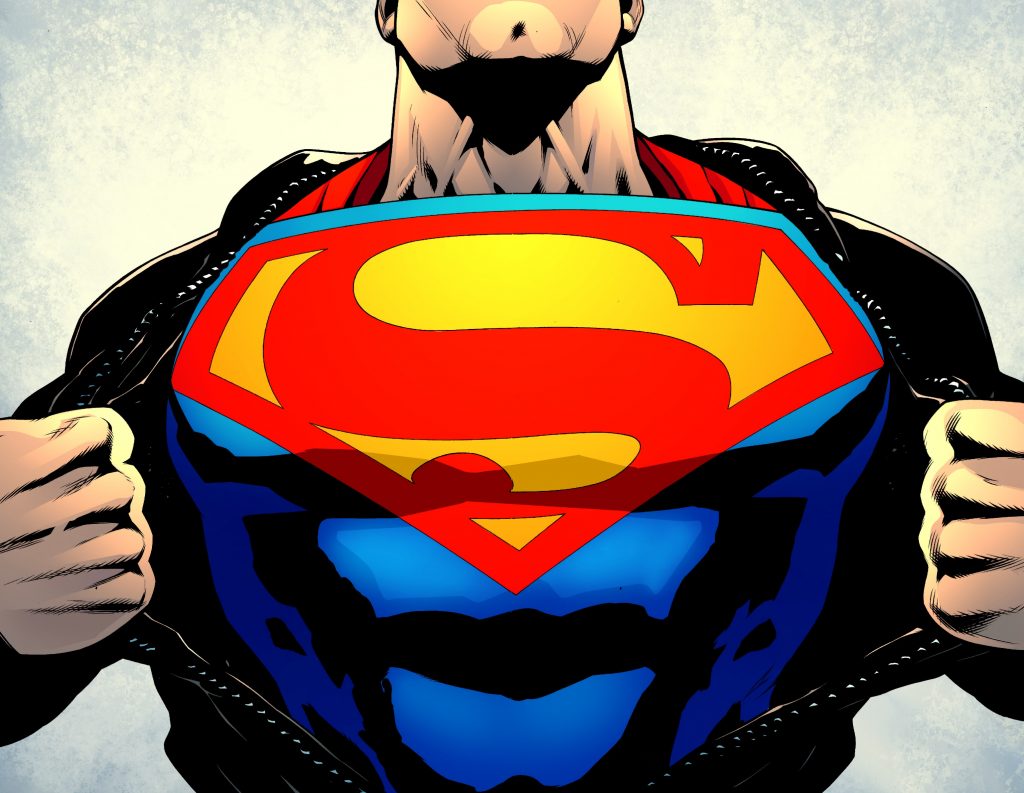
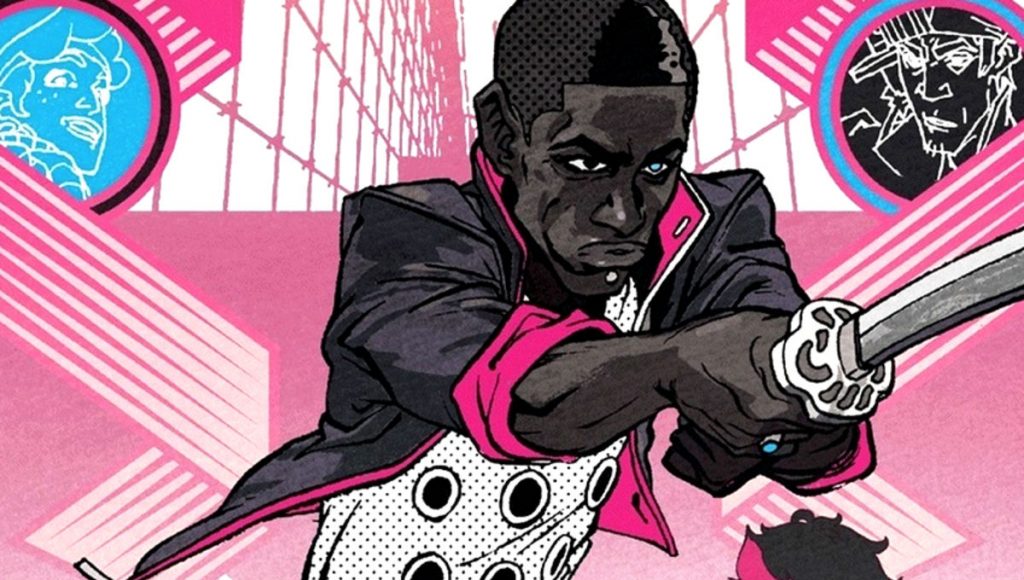

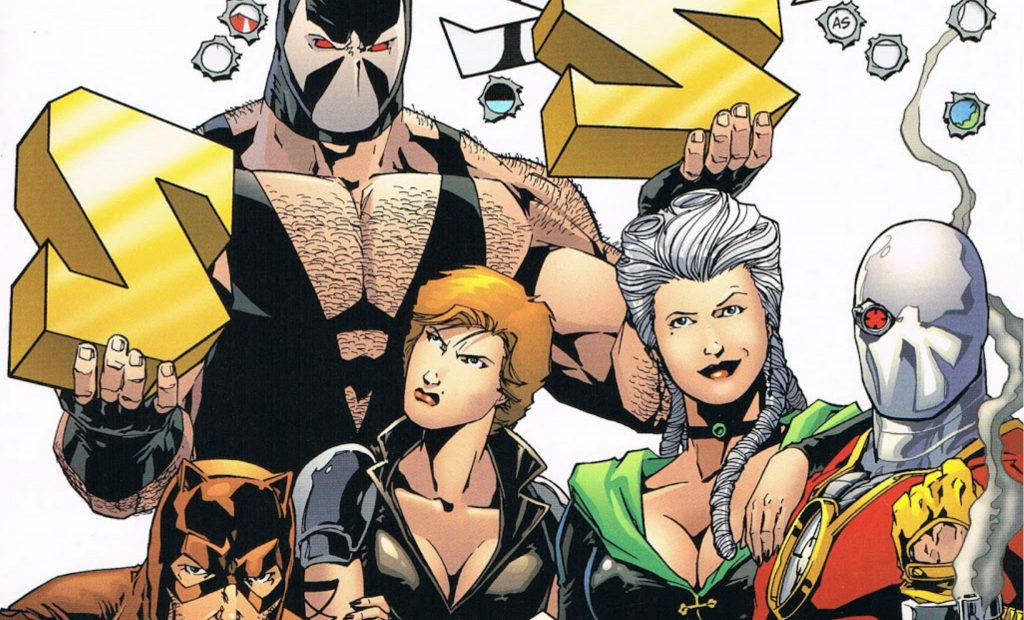
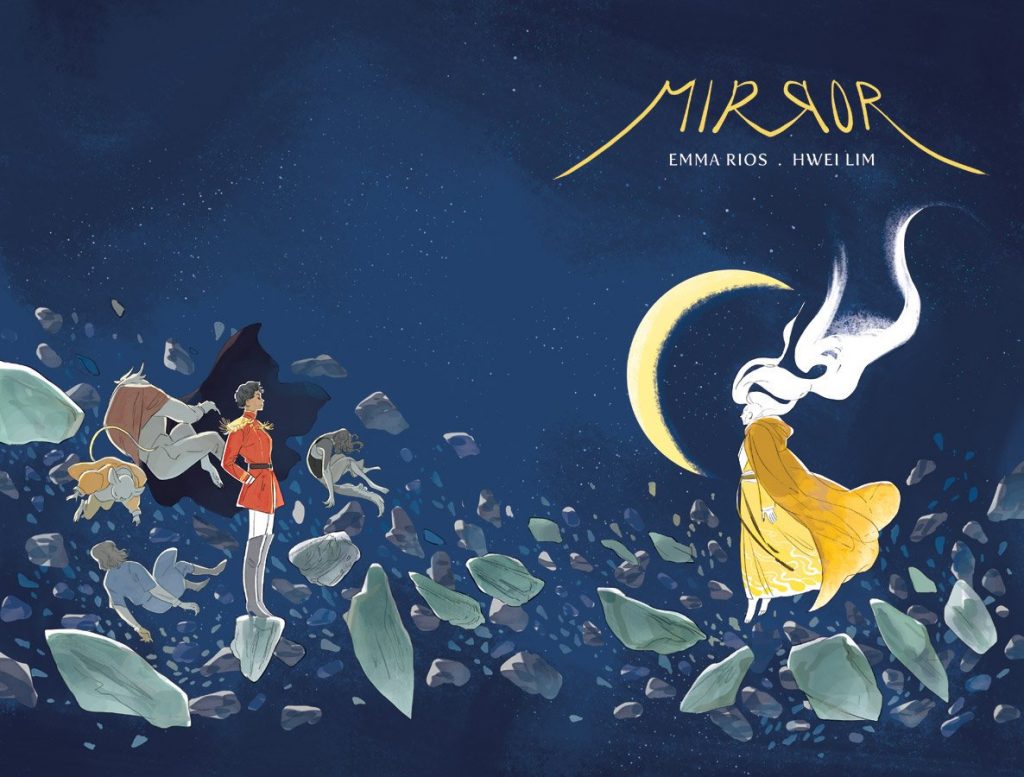
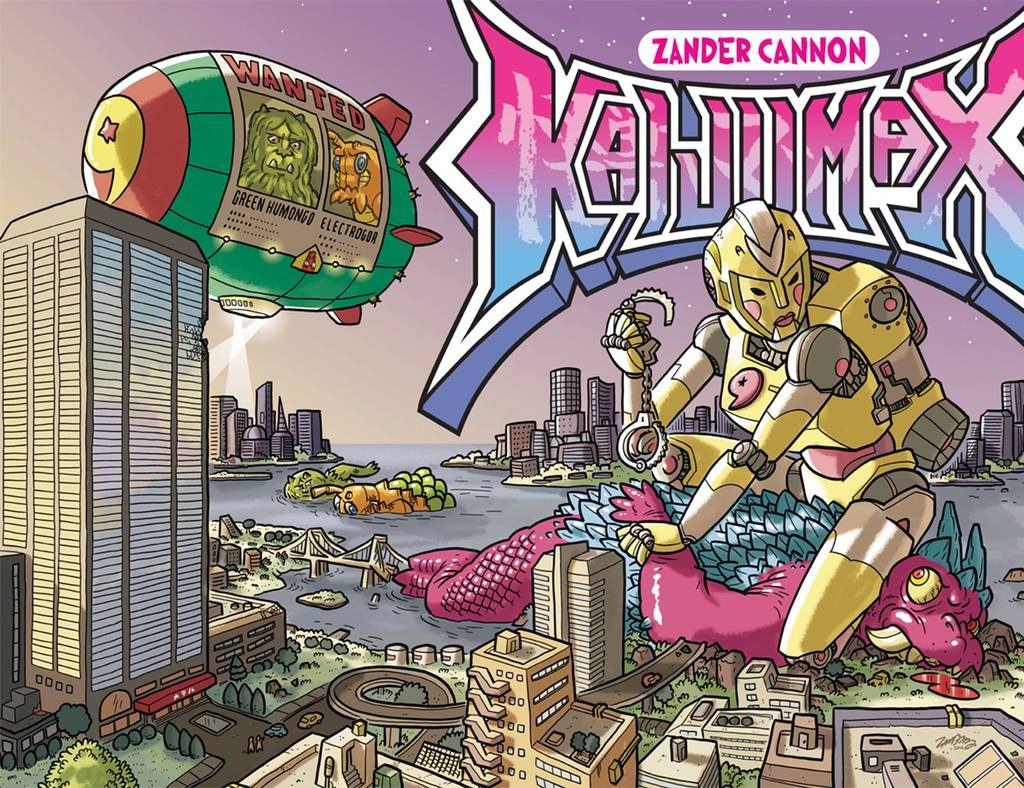
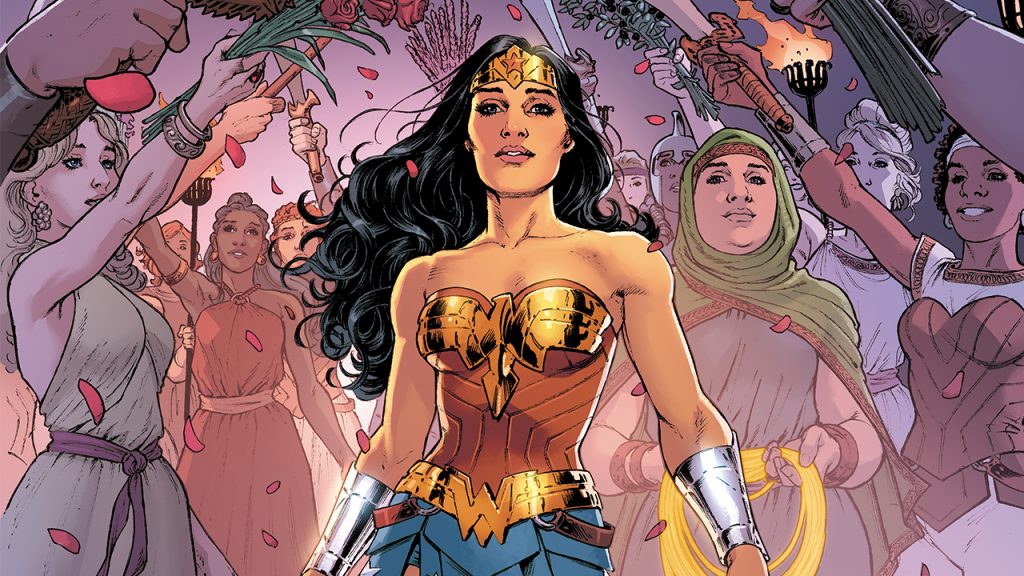
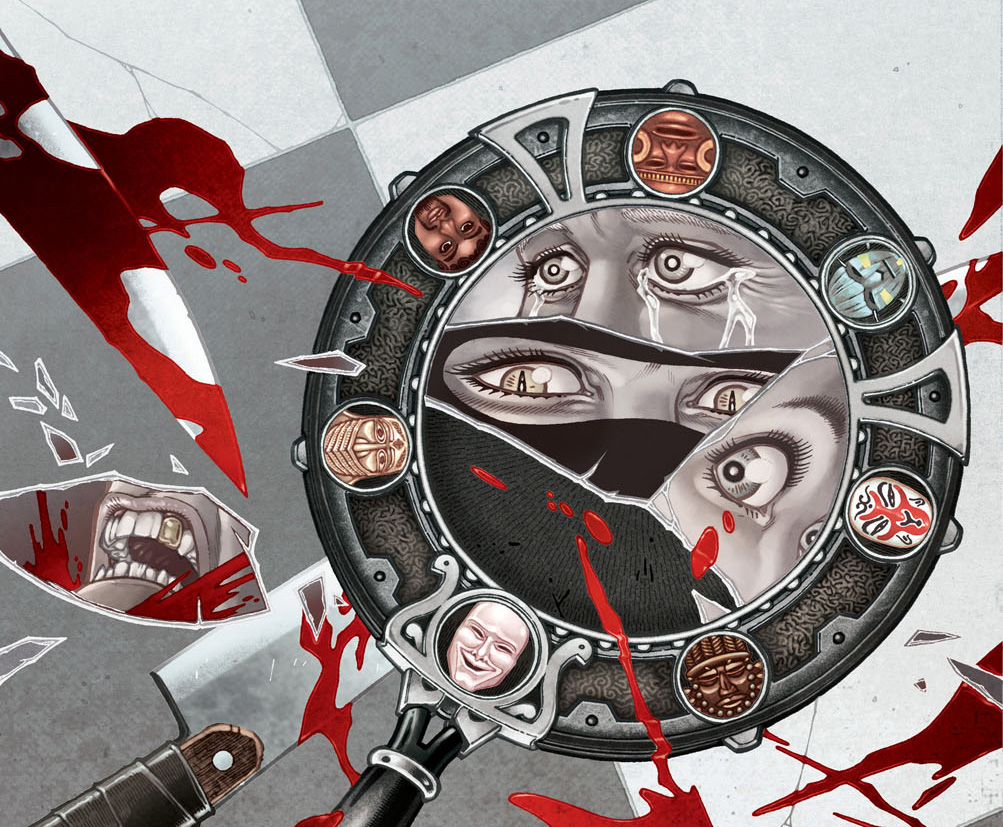

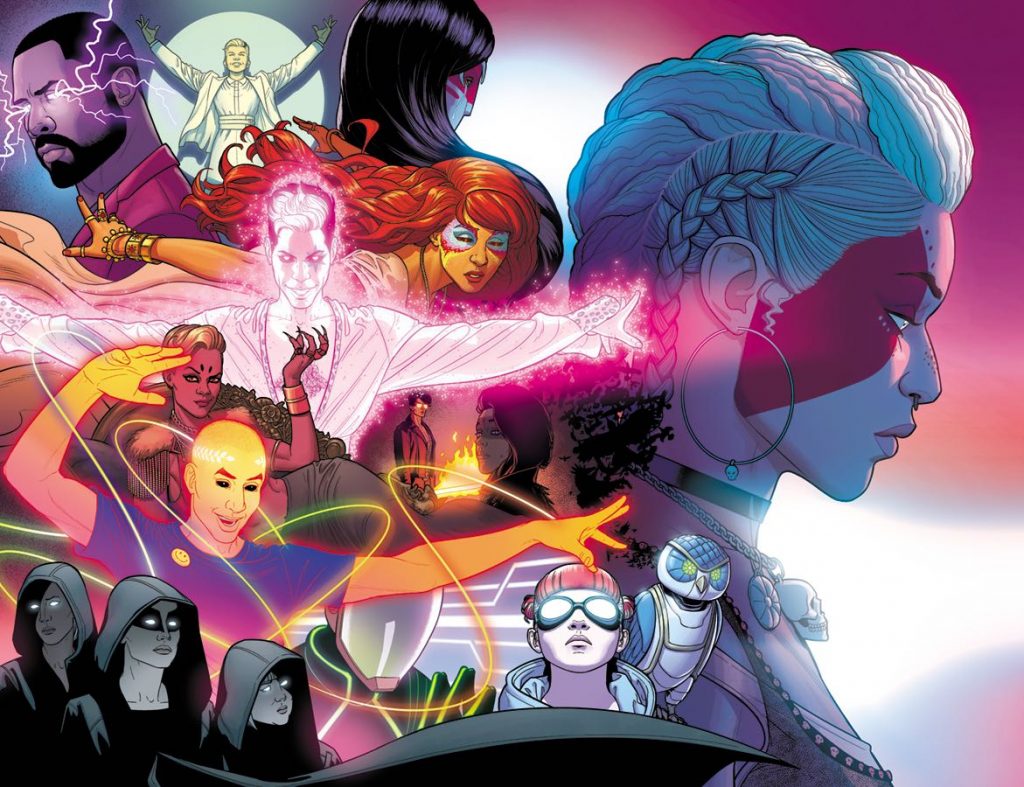
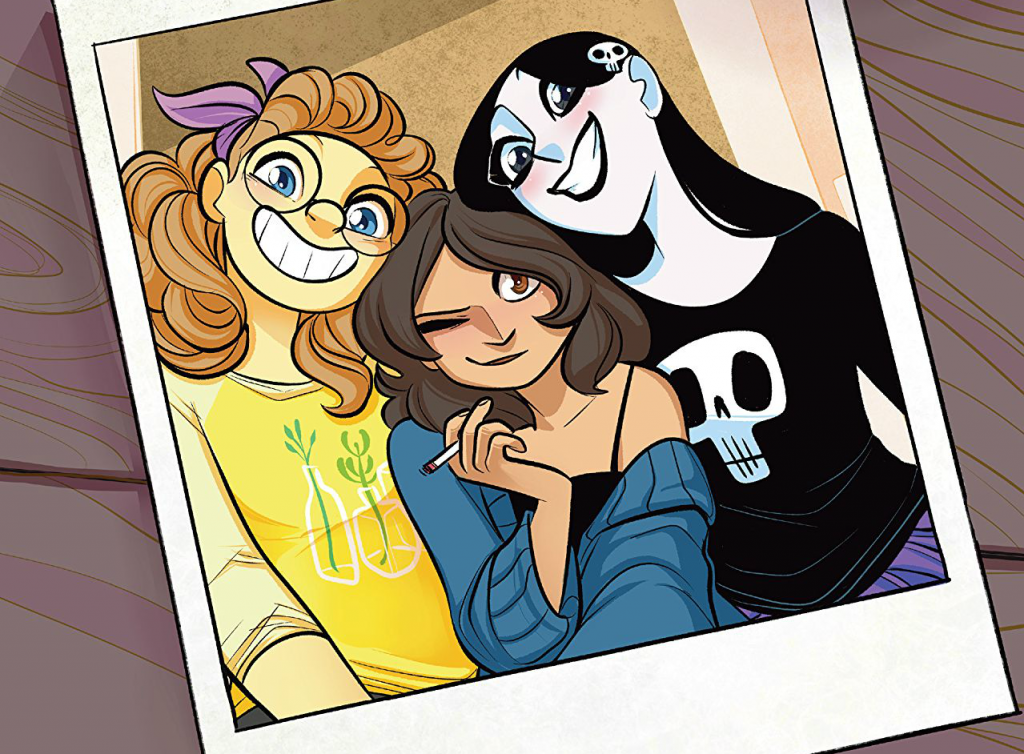
+++++++++++++++++++++++++++++++++++++++++++++++++++++++++++++++++++++++
+++++++++++++++++++++++++++++++++++++++++++++++++++++++++++++++++++++++
+++++++++++++++++++++++++++++++++++++++++++++++++++++++++++++++++++++++
- Bloggery committed by chris tower - 2001.01 - 10:10
- Days ago = 1642 days ago
- New note - On 1807.06, I ceased daily transmission of my Hey Mom feature after three years of daily conversations. I plan to continue Hey Mom posts at least twice per week but will continue to post the days since ("Days Ago") count on my blog each day. The blog entry numbering in the title has changed to reflect total Sense of Doubt posts since I began the blog on 0705.04, which include Hey Mom posts, Daily Bowie posts, and Sense of Doubt posts. Hey Mom posts will still be numbered sequentially. New Hey Mom posts will use the same format as all the other Hey Mom posts; all other posts will feature this format seen here.



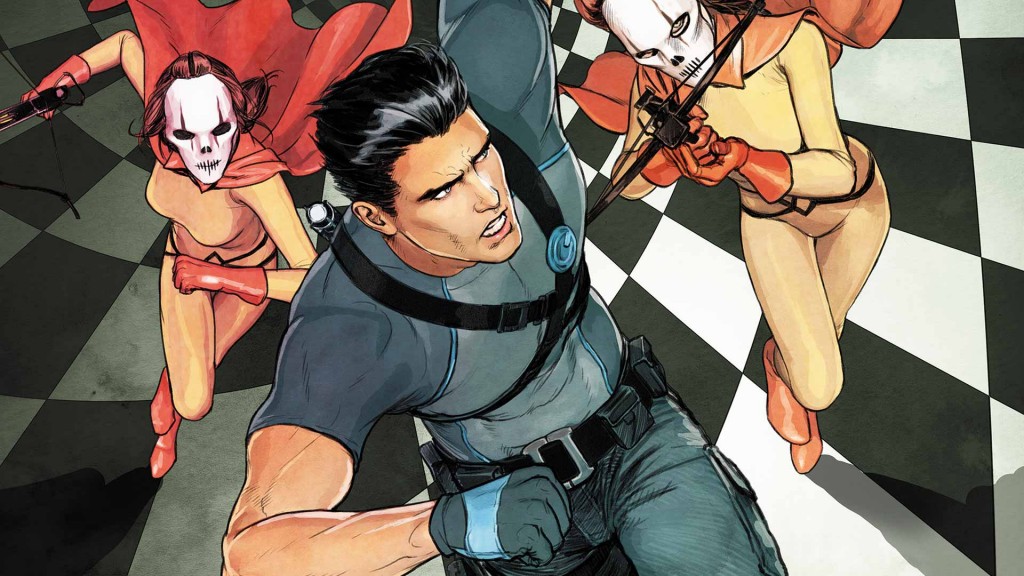
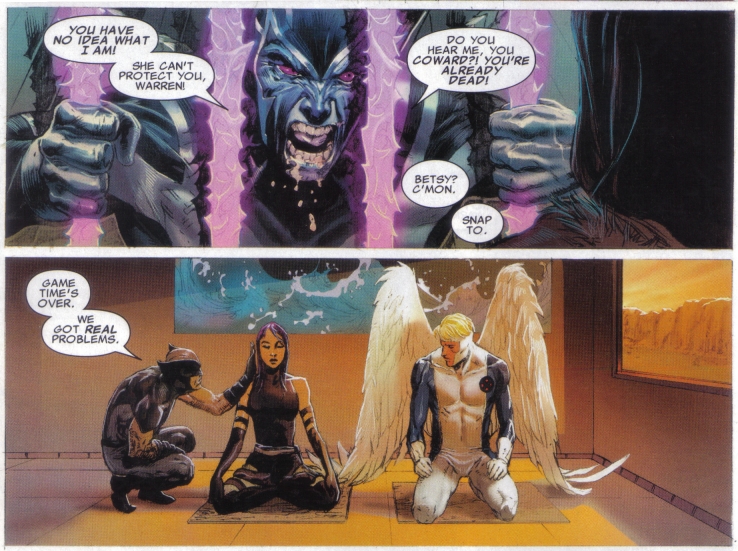














































































No comments:
Post a Comment